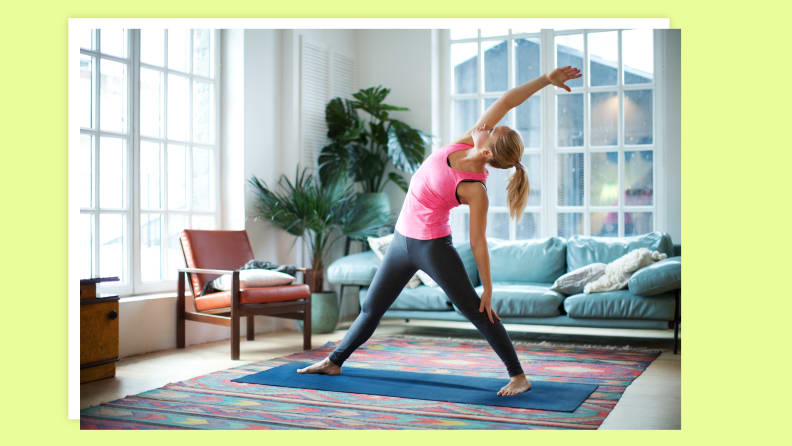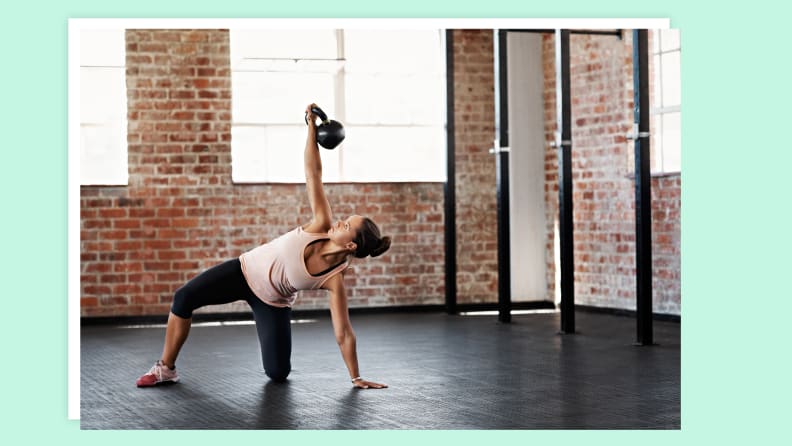Is mobility training the key to improved strength and flexibility?
Exercises targeted at improving how you move your muscles can help you avoid injury.
 Credit:
Reviewed / undrey
Credit:
Reviewed / undrey
Products are chosen independently by our editors. Purchases made through our links may earn us a commission.
No matter what your fitness goals are, being able to move your body without pain is essential to helping you achieve them. If you find yourself struggling with tight muscles after hitting the gym and can’t make your typical toe touch happen quite as easily, you may want to focus on mobility training.
Mobility training includes exercises that can increase your range of motion and help you get stronger while avoiding injury. It can also help athletes with disabilities improve strength and coordination, which can be especially important for those with neuromuscular disease, like cerebral palsy. But while you may have seen “mobility challenges” circulating on social media, what mobility training actually is can feel unclear. We asked trainers what they wish you knew about mobility training. Let’s dive in.
What is mobility training?
In a nutshell, the goal of mobility training is to help you move your body well. While resistance training helps you build strength and cardio training gives your aerobic health a boost, mobility training improves the range of motion in your joints and muscles.
In addition to giving you the ability to perform moves in the gym with better form, you’ll also reduce your risk of injury, as bodies that move better can be better at reacting in a healthier way to unexpected stimuli, such as tripping over something.
“Mobility training is an antidote for a sedentary lifestyle, a complement to overexercising, and helps build stronger, more adaptive muscles and joints for increased longevity,” says Nina Moore, certified personal trainer based in California and founding trainer for Forme.
Any movement that focuses on increasing your range of motion could be considered mobility work. This includes spiderman lunges, 90/90 switches, cat/cow pose, and pushups, which all build flexibility, strength, and coordination.
What are the benefits of mobility training?

Are you ready to get started?
Improving your body’s range of motion can make your workouts more effective, as being able to access the entire depth or range of an exercise allows you to target the intended muscle groups and avoid straining any stabilizing muscles. Mobility training can also improve your circulation and posture, reduce injuries, and keep you limber so you can work out for a longer timespan, according to Moore.
“[Mobility training] plays an important role in achieving fitness goals by helping you move better,” Moore says. “If you can move better, you’re able to perform better, move more efficiently, and reach your goals faster.”
What’s the difference between mobility and flexibility?
Mobility is a form of active movement, meaning it refers to your ability to move your muscles and joints in a healthy way. Flexibility, on the other hand, is a passive movement, and refers to your muscles’ abilities to lengthen when holding a stretch.
It’s important to work on both, though, because mobility requires flexibility to allow you to build strength and coordination. This is why dynamic stretches that incorporate all three of these elements are a great way to improve your body’s mobility.
“Mobility training involves actively increasing the range of motion of your joints so they stay healthy and move the way they were meant to,” Moore says. “Flexibility is an important component of mobility; yoga and stretching are great ways to enhance mobility by improving the soft tissue of the body's ability to lengthen passively.”
Who can benefit from mobility training?
There's no downside to giving mobility training a try. It can be a simple way to incorporate movement and alleviate tight muscles for those who sit at a desk all day or suffer from a muscular disability and can improve performance and reduce injury risk for athletes looking to build strength or endurance. Of course, those with more specialized medical needs may want to seek approval from a medical professional or physical therapist before devising their routine.
How can I start mobility training?

Some light workout equipment like kettlebells are useful but not necessary.
You can start mobility training by adding it to your existing workout routine a few days a week, or every day, if you have the time and willingness to. Spending as little as 10 or 15 minutes warming up your body before a workout, focusing on the muscle groups you plan to target, can help you reap even greater benefits and results.
To improve your range of motion, try performing slow, steady, dynamic stretches and bodyweight exercises. You can also foam roll before or after your workout for good measure, though the dynamic movements should be your focus.
If you don’t already have a workout routine, or you’re looking to add a new modality to it, practicing yoga is a great way to improve mobility. If that doesn’t suit your style, you can try doing 15 minutes of mobility work a few times a week whenever it fits in your schedule.
Moore recommends focusing on thoracic (your upper and middle back) and hip mobility as those are the areas that tighten up after sitting most of the day. She recommends lying hip rotations, frog stretches, glute bridges, 90/90 switches, Spiderman lunges, thoracic spinal rotations, and cat/cow pose.
The product experts at Reviewed have all your shopping needs covered. Follow Reviewed on Facebook, Twitter, Instagram, TikTok, or Flipboard for the latest deals, product reviews, and more.
Prices were accurate at the time this article was published but may change over time.


